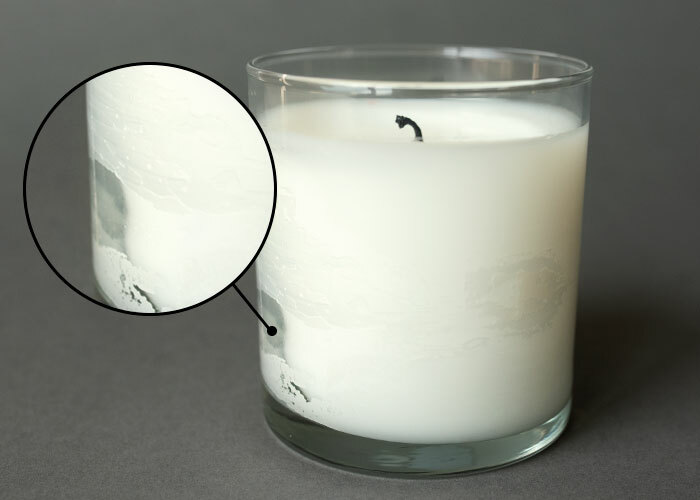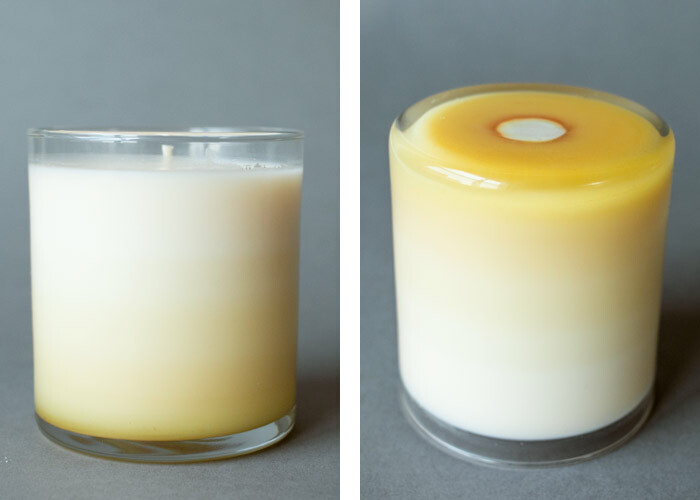Candles serve not only as sources of illumination but also as symbols of relaxation, ambiance, and comfort in our homes. Yet, despite their beauty, candles are susceptible to wax discoloration over time. In this comprehensive guide, we will delve into the nuances of wax discoloration, exploring its causes, implications, and most importantly, effective strategies for prevention. By understanding and implementing these preventative measures, you can ensure that your candles retain their pristine appearance and continue to enhance your living spaces for years to come.
Understanding Wax Discoloration

Wax discoloration, often a result of chemical reactions and environmental factors, manifests as changes in color, texture, or opacity of the candle wax. The primary culprits behind wax discoloration include:
- Exposure to Light: Sunlight, particularly ultraviolet (UV) rays, can accelerate the degradation of candle wax. Over time, UV radiation breaks down the molecular structure of the wax, leading to changes in color and texture. Additionally, artificial light sources can also contribute to wax discoloration, especially if candles are left exposed for extended periods.
- Reaction with Air and Moisture: Oxygen in the air can react with certain compounds in the wax, resulting in oxidation and discoloration. Furthermore, moisture can seep into the wax, causing it to become cloudy or develop water spots, particularly in environments with high humidity levels.
- Interaction with Fragrance Oils or Additives: Fragrance oils and additives used in candles may contain components that are prone to discoloration when exposed to light or air. These compounds can react with the wax, leading to changes in color and degradation of the candle’s appearance over time.
Impact of Wax Discoloration
The consequences of wax discoloration extend beyond mere aesthetics:
- Aesthetic Implications: Discolored wax can detract from the visual appeal of candles, diminishing their decorative value and overall ambiance. Whether it’s a subtle shift in hue or noticeable spotting, wax discoloration can compromise the elegance and allure of candles, especially those intended for display.
- Effects on Candle Performance: In addition to its visual impact, wax discoloration can also affect the performance and burn quality of candles. Altered wax composition may result in uneven burning, reduced fragrance throw, and compromised overall quality of the candle’s burn. Consequently, candles may fail to deliver the desired sensory experience, undermining their purpose and utility.
Best Practices for Preventing Wax Discoloration
Preventing wax discoloration necessitates proactive measures and careful consideration of storage conditions:
- Choosing Suitable Storage Locations: Opt for cool, dry areas away from direct sunlight to minimize UV exposure and prevent accelerated degradation of candle wax. Dark or opaque containers are ideal for shielding candles from light and maintaining their pristine appearance over time.
- Proper Storage Containers and Techniques: Invest in airtight containers or resealable plastic bags to shield candles from air and moisture exposure, which can hasten discoloration and degradation. Ensure containers are securely sealed to minimize oxidation and moisture ingress, preserving the integrity of the wax.
- Considerations for Fragrance Oils and Additives: Select fragrance oils and additives with minimal discoloration potential and conduct compatibility tests to assess their interaction with the wax. By choosing stable formulations and monitoring their performance over time, you can mitigate the risk of wax discoloration and ensure the longevity of your candles.
Tips for Maintaining Wax Quality
Regular maintenance and attentive care are essential for preserving the quality of candle wax:
- Regular Inspection of Stored Candles: Periodically assess stored candles for signs of discoloration or degradation, taking prompt action to address any issues detected. Early intervention can prevent further deterioration and prolong the lifespan of your candles.
- Cleaning and Maintenance Techniques: For surface discoloration, employ gentle cleaning methods using a soft cloth or sponge dampened with mild soap and water. In cases of extensive discoloration, consider re-melting and repouring the wax to restore its appearance and integrity. By addressing discoloration proactively, you can maintain the visual appeal and performance of your candles for optimal enjoyment.
Long-Term Strategies for Wax Preservation
To safeguard the quality of candle wax over the long term, implement the following strategies:
- Temperature and Humidity Control: Invest in temperature and humidity control devices, such as dehumidifiers or climate-controlled storage units, to maintain optimal storage conditions. By controlling environmental variables, you can minimize the risk of discoloration and preserve the integrity of the wax.
- Rotation of Candle Stock: Rotate your candle stock regularly to prevent prolonged storage and ensure that candles are used within their optimal shelf life. By incorporating older candles into your rotation, you can minimize the risk of discoloration due to extended storage and enjoy their beauty and fragrance to the fullest.
Conclusion
Wax discoloration poses a significant challenge for candle enthusiasts seeking to preserve the beauty and quality of their cherished collections. By understanding the factors contributing to discoloration and adopting proactive prevention measures, you can safeguard the integrity of your candles and maintain their allure over time. Whether through careful storage practices, diligent maintenance, or long-term preservation strategies, the key lies in proactive care and attention to detail. Let these insights guide you in your quest to protect and cherish your candles, ensuring their beauty and elegance endure for years to come.




